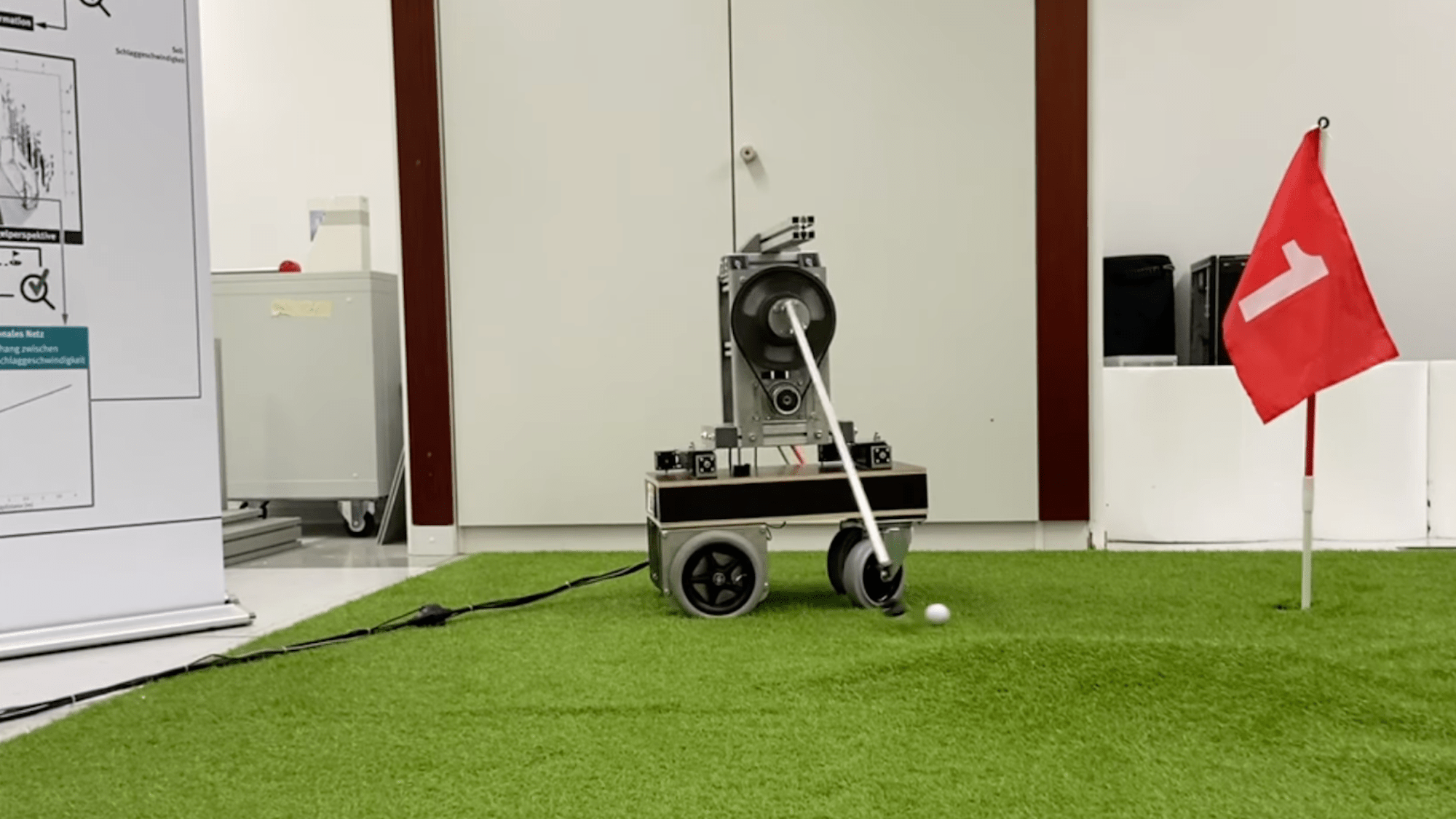

The first robot to sink an impressive hole-in-one pulled off its fairway feat back in 2016. But the newest automated golfer looks like it’s coming for the short game.
First presented at the IEEE International Conference on Robotic Computing last month and subsequently highlighted by New Scientist on Tuesday, “Golfi” is the modest-sized creation from a research team at Germany’s Paderborn University capable of autonomously locating a ball on a green, traveling to it, and successfully sinking a putt around 60 percent of the time.

To pull off its relatively accurate par, Golfi utilizes an overhead 3D camera to scan an indoor, two-square-meter artificial putting green to find its desired golf ball target. It can then scoot over to the ball and use a neural network algorithm to quickly analyze approximately 3,000 potential golf swings from random points while accounting for physics variables like mass, speed, and ground friction. From there, its arm offers a modest putt that sinks the ball roughly 6 or 7 times out of 10. Although not quite as good as standard human players, it’s still a sizable feat for the machine.
[Related: Reverse-engineered hummingbird wings could inspire new drone designs.]
However, Golfi isn’t going to show up at minigolf parks anytime soon, however. The robot’s creators at Paderborn University designed their prototype to solely work in a small indoor area while connected to a wired power source. Golfi’s necessary overhead 3D camera mount also ensures it won’t make an outdoor tee time, either. That’s because, despite its name, Golfi isn’t actually designed to revolutionize the golf game. Instead, the little robot was built to showcase the benefits of combining physics-based models with machine learning programs.
It’s interesting to see Golfi’stalent in comparison to other recent robotic advancements, which have often drawn from inspirations within the animal kingdom—from hummingbirds, to spiders, to dogs that just so happen to also climb up walls and across ceilings.
